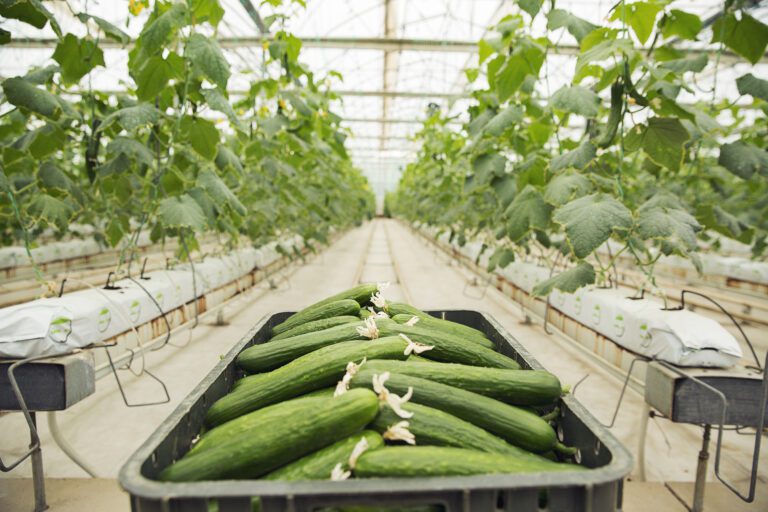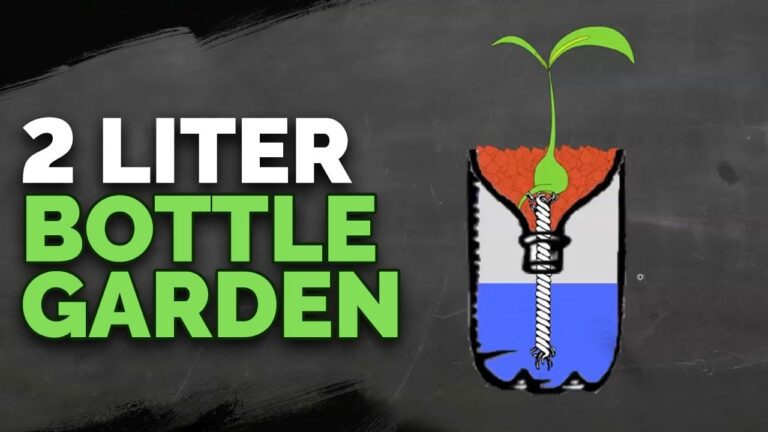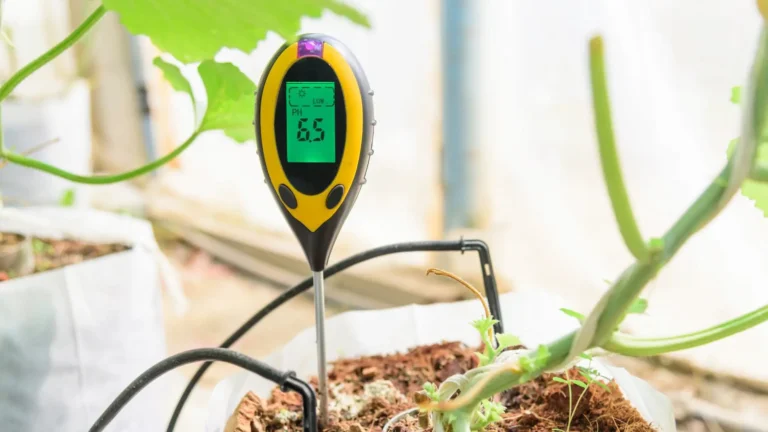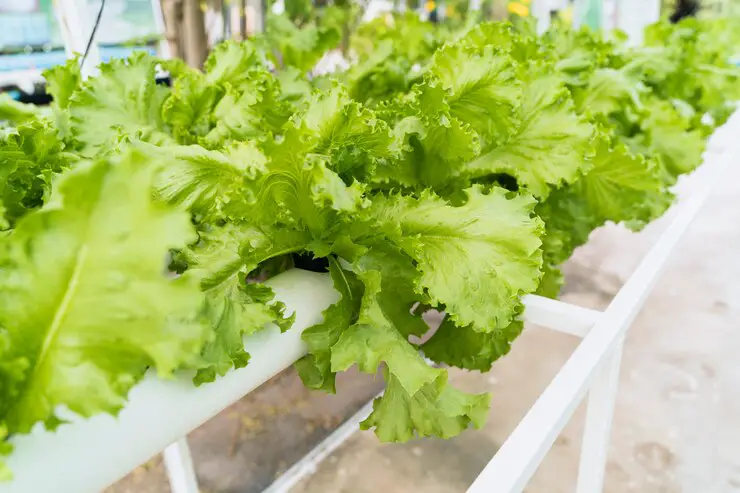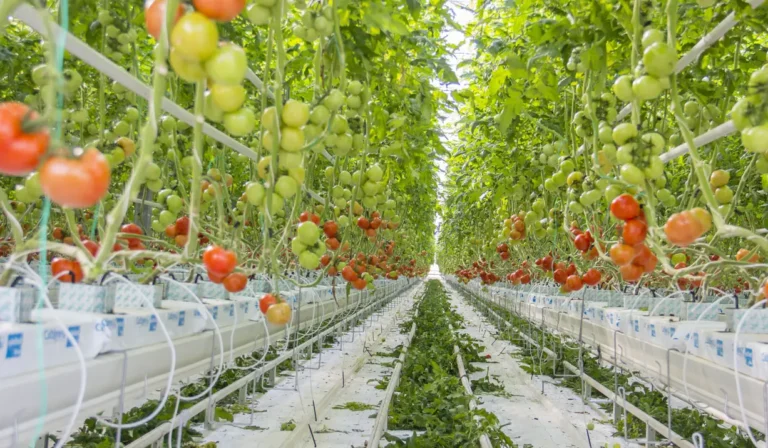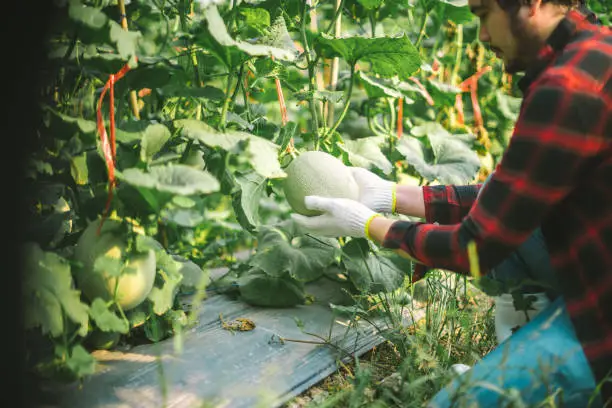Hydroponic Plant Pairing: How to Match Plants for Optimal Growth
Table of Contents
Understanding the Importance of Plant Pairing in Hydroponics
When it comes to hydroponics, understanding the importance of plant pairing is crucial for successful growth and optimal yields. Plant pairing refers to the practice of selecting and growing different plants together in a hydroponic system based on their compatibility and complementary characteristics. This strategic approach plays a vital role in creating a balanced and harmonious environment where plants can thrive.
The benefits of plant pairing in hydroponics are manifold. Firstly, it promotes efficient use of resources such as water, nutrients, and space. By pairing plants with varying nutrient requirements, you can ensure that each plant receives the specific elements it needs for healthy growth. Furthermore, certain plant combinations can enhance nutrient absorption and utilization through symbiotic relationships, leading to improved overall plant health. Additionally, plant pairing allows for effective pest and disease management, as some plants have natural repellent properties that can deter pests or attract beneficial insects. By carefully selecting plant combinations, you can create a natural defense system that reduces the need for chemical pesticides. Overall, plant pairing in hydroponics is a valuable technique that maximizes productivity while minimizing resource wastage, making it an essential consideration for any hydroponic gardener.

Exploring the Factors that Influence Plant Compatibility in Hydroponic Systems
Pairing plants in hydroponic systems requires careful consideration of various factors that influence their compatibility. One of the key factors is nutrient requirements. Different plants have different nutrient needs, and pairing plants with similar nutrient requirements can ensure optimal growth and development. For example, pairing plants that thrive in nitrogen-rich environments together can prevent nutrient imbalances and promote healthy growth.
Another important factor to consider is plant size and growth habit. Plants with similar sizes and growth habits can be paired together to maximize space utilization in hydroponic systems. This not only allows for efficient use of limited space but also minimizes competition for resources. For instance, pairing plants with similar growth rates can prevent one plant from overshadowing or inhibiting the growth of another.
Additionally, matching plants based on their light requirements is crucial in hydroponic setups. Different plants have varying needs for light intensity and duration. By pairing plants with similar light requirements, you can ensure that each plant receives the appropriate amount of light for photosynthesis and growth. This can significantly impact the overall efficiency and productivity of the hydroponic system.
In conclusion, exploring the factors that influence plant compatibility in hydroponic systems is essential for successful plant pairings. By considering factors such as nutrient requirements, plant size and growth habit, and light requirements, gardeners can create harmonious combinations that promote optimal growth and maximize space utilization. These considerations play a vital role in achieving a thriving and productive hydroponic garden.

The Role of Nutrient Requirements in Plant Pairing for Optimal Growth
Matching plant pairs in hydroponic systems involves considering various factors to ensure optimal growth. One crucial aspect to consider is the nutrient requirements of different plant species. Each plant has specific nutritional needs, and pairing plants with similar nutrient requirements can help maintain a balanced and harmonious environment in the hydroponic setup.
Nutrients are essential for plants to carry out their physiological functions and achieve healthy growth. These nutrients include macronutrients such as nitrogen, phosphorus, and potassium, as well as trace elements like iron, manganese, and copper. When selecting plant pairs, it is important to choose species that have similar nutrient requirements to ensure that all plants obtain adequate nourishment.
Pairing plants with divergent nutrient requirements can lead to imbalances, as one species might overconsume or deplete certain nutrients. This imbalance can negatively affect the growth and overall health of the plants. Therefore, understanding the nutrient requirements of different plants and matching them accordingly is crucial for optimal growth and development in hydroponic systems. By providing the necessary nutrients in appropriate ratios, gardeners can create a nutrient-rich environment that supports the healthy growth of plant pairs.
Considering Plant Size and Growth Habit for Successful Pairing in Hydroponics
Pairing plants of similar size and growth habit is essential for successful hydroponic gardening. When selecting plants for your hydroponic system, it is crucial to consider their ultimate size and growth characteristics. The compatibility of plant size and growth habit plays a vital role in ensuring that each plant receives adequate space, light, and nutrients for optimal growth.
Plants with similar sizes and growth habits can be paired together to maximize the efficient use of space in a hydroponic system. This enables each plant to receive the necessary resources without any overcrowding or competition. Furthermore, compatible plant sizes allow for easy access and maintenance, as pruning, trellising, and harvesting become more manageable tasks.
Consideration of growth habits is equally important. Some plants have sprawling habits, while others grow upright or have vining tendencies. Pairing plants with complementary growth habits can help create a well-balanced hydroponic garden, preventing overcrowding and enhancing overall productivity. For example, pairing a vining plant with an upright plant allows the vining plant to utilize the vertical space provided by the upright plant’s structure, making efficient use of available area.
| Plant Characteristics | Considerations for Pairing |
|---|---|
| Size | – Pair plants with similar size to ensure even light distribution. |
| – Consider the mature height and spread to avoid shading issues. | |
| – Plan the layout to accommodate the space requirements of each plant. | |
| Growth Habit | – Pair plants with compatible growth habits to avoid competition. |
| – Consider vertical space utilization for climbing or vining plants. | |
| – Arrange plants with similar nutrient and water requirements. | |
| – Take into account the potential for overgrowth and overcrowding. |
Matching Plants Based on Light Requirements in Hydroponic Setups
When it comes to pairing plants in hydroponic setups, matching them based on their light requirements is essential to ensure optimal growth and development. Different plants have varying needs when it comes to light intensity, duration, and spectrum. By understanding these requirements and selecting compatible plant pairs, gardeners can create a harmonious growing environment that promotes healthy growth and bountiful yields.
One important factor to consider when matching plants based on light requirements is the intensity of light needed for their photosynthesis process. Some plants, such as leafy greens like lettuce or spinach, thrive under lower light intensities, while others, like tomatoes or peppers, require higher levels of light to flourish. By grouping plants with similar light intensity needs together, gardeners can effectively optimize the light conditions in their hydroponic setups and provide each plant with the necessary amount of light for growth.
In addition to light intensity, the duration of light exposure is another vital consideration when matching plants in hydroponics. Some plants, like herbs or flowering plants, require shorter daylight hours to trigger their reproductive processes, while others, such as fruiting crops, benefit from longer periods of light exposure. By grouping plants with similar light duration requirements, gardeners can create a light schedule that meets the needs of each plant, promoting their growth and development in a synchronized manner.
Furthermore, the spectrum of light is crucial for plant pairing in hydroponic systems. Different plants have different preferences for light wavelengths, with some favoring red and blue light for enhanced photosynthesis, while others benefit from a broader spectrum of light. By selecting plants with compatible light spectrum preferences, gardeners can optimize their lighting setups and ensure that each plant receives the specific wavelengths of light they require for optimal growth.
Matching plants based on light requirements in hydroponic setups is not only important for promoting healthy growth and development, but it also helps maximize energy efficiency and reduce costs. By creating well-matched plant pairs, gardeners can optimize the use of artificial lighting, ensuring that it is used efficiently and effectively for the plants’ benefit. Ultimately, by paying close attention to the light requirements of different plants and carefully selecting compatible pairs, gardeners can create thriving hydroponic systems that yield abundant harvests.
Complementary Root Systems: Pairing Plants with Different Root Structures
One crucial aspect of successful plant pairing in hydroponic systems is considering the compatibility of root structures. Plants with complementary root systems can enhance nutrient uptake, promote better water distribution, and prevent competition for resources. By understanding the different types of root structures and their respective functions, gardeners can strategically pair plants to optimize their growth potential.
Plants exhibit various types of root structures, including taproots, fibrous roots, and adventitious roots. Taproots are characterized by a dominant central root that extends vertically into the soil. These roots offer stability and are particularly efficient at accessing deeper moisture and nutrients. On the other hand, fibrous roots consist of a dense network of interconnected fine roots that are adept at absorbing nutrients from the top layer of the growing medium. Lastly, adventitious roots are unique root structures that emerge from above-ground plant parts, such as stems or leaves, enabling plants to access additional sources of nutrition.
When pairing plants with different root structures, it is essential to consider their respective needs and growth patterns. For example, combining plants with taproots and fibrous roots can maximize nutrient uptake from different soil depths and prevent overcrowding of the growing medium. Similarly, pairing plants with adventitious roots and fibrous roots can provide a robust nutrient absorption system that efficiently utilizes both surface-level and aerial resources.
By harnessing the benefits of complementary root systems, gardeners can create synergistic plant pairings that promote optimal nutrient absorption and overall plant health in hydroponic systems. The strategic combination of plants with different root structures not only minimizes competition but also maximizes resource utilization, leading to healthier and more productive plants.
| Plant Pairing Strategy | Considerations for Complementary Root Systems |
|---|---|
| Deep and Shallow Roots | – Pair plants with deep roots alongside those with shallow roots. |
| – Deep-rooted plants access nutrients from deeper soil layers. | |
| – Shallow-rooted plants utilize nutrients from the topsoil. | |
| Fibrous and Taproot Systems | – Combine plants with fibrous and taproot systems for diversity. |
| – Fibrous roots are ideal for nutrient absorption near the surface. | |
| – Taproots access nutrients from deeper layers in the soil. | |
| Nitrogen-Fixing and Non-Nitrogen-Fixing | – Pair nitrogen-fixing plants with those that benefit from nitrogen. |
| – Nitrogen-fixing plants enhance soil fertility by fixing atmospheric nitrogen. | |
| – Non-nitrogen-fixing plants utilize the available nitrogen in the soil. |
Enhancing Plant Health and Disease Resistance through Strategic Plant Pairing
Enhancing plant health and disease resistance is a key aspect of successful hydroponic gardening. Strategic plant pairing can play a crucial role in achieving this objective. By carefully selecting and combining plants, gardeners can create a mutually beneficial environment that promotes overall plant health and reduces the risk of diseases.
One important aspect to consider when strategically pairing plants is their natural pest resistance abilities. Certain plants have developed natural defenses against specific pests, while others may attract beneficial insects that help control pests. For example, planting marigolds alongside tomatoes can help deter harmful insects like nematodes, aphids, and whiteflies. Additionally, the strong aroma of marigolds can mask the scent of nearby crops, making it more difficult for pests to locate them. By taking advantage of these natural defenses, gardeners can reduce the need for pesticides and minimize the risk of pest-related diseases.
In addition to pest resistance, plant pairing can also enhance disease resistance in hydroponic systems. Some plants have the ability to suppress the growth of certain pathogens or release natural compounds that inhibit disease development. For instance, planting basil alongside lettuce can help protect the lettuce from diseases such as downy mildew. Basil produces essential oils, such as eugenol and citronellol, which have antimicrobial properties and can effectively limit the spread of pathogens. By strategically selecting plant combinations based on their disease resistance properties, gardeners can create a more resilient hydroponic system that is less susceptible to common diseases.
Strategic plant pairing in hydroponics is a powerful tool for enhancing plant health and disease resistance. By considering natural pest resistance and disease-fighting properties, gardeners can create a harmonious environment where plants can support and protect each other. This not only improves the overall health and productivity of the garden, but also reduces the reliance on chemical interventions, leading to a more sustainable and eco-friendly approach to hydroponic gardening.

Maximizing Space Utilization: Pairing Plants with Different Growth Rates
Pairing plants with different growth rates is a strategic approach that allows hydroponic gardeners to maximize the utilization of limited space. By selecting plants with varying growth rates, gardeners can ensure that every inch of their growing area is efficiently used to produce a diverse range of crops.
One advantage of pairing plants with different growth rates is the ability to stagger harvest times. Fast-growing plants can be paired with slower-growing varieties, ensuring a continuous supply of fresh produce. For example, lettuce, which typically reaches maturity within a few weeks, can be paired with tomatoes, which have a longer maturation period. This way, gardeners can enjoy a steady harvest of lettuce while waiting for their tomatoes to ripen.
Another benefit of pairing plants with different growth rates is the efficient use of vertical space. Taller plants with slower growth rates, such as beans or cucumbers, can be grown alongside faster-growing leafy greens like spinach or kale. By training the tall plants to grow vertically on trellises or stakes, gardeners can utilize the vertical space above the shorter plants. This not only maximizes space utilization but also promotes better airflow and accessibility for maintenance tasks like pruning or harvesting.
Overall, pairing plants with different growth rates is a clever strategy for hydroponic gardeners to optimize their growing space. By carefully selecting and combining plants with varying growth rates, gardeners can enjoy a continuous harvest and make the most of their vertical space, ultimately increasing their crop yields and creating a more productive hydroponic system.

The Art of Companion Planting in Hydroponics: Beneficial Plant Combinations
Companion planting, a practice rooted in ancient agricultural wisdom, involves strategically pairing different plant species to enhance their growth and protect them from pests and diseases. In hydroponics, where plant roots are submerged in nutrient-rich water instead of soil, companion planting takes on a whole new level of importance. By carefully selecting compatible plant combinations, hydroponic gardeners can create a thriving ecosystem that maximizes plant health and productivity.
One popular example of companion planting in hydroponics is the pairing of tomatoes and basil. These two plants have a mutually beneficial relationship, as the aromatic compounds released by basil plants actually repel common tomato pests like aphids and whiteflies. Additionally, the basil plant’s dense foliage can provide shade and help control excessive evaporation, creating a more favorable environment for the tomato plants. This harmonious duo not only helps to prevent pest infestations but also contributes to the overall health and vitality of both plants, resulting in higher yields and better tasting produce. By exploring similar beneficial plant combinations, hydroponic gardeners can unlock the full potential of companion planting in their systems.
Avoiding Plant Competition: Pairing Plants with Similar Nutrient Uptake Rates
In hydroponic systems, it is crucial to pair plants with similar nutrient uptake rates to avoid competition and ensure optimal growth. When plants with different nutrient requirements are placed together, they may compete for the available nutrients, leading to imbalances and deficiencies. This can significantly affect the overall health and productivity of the plants.
By pairing plants with similar nutrient uptake rates, we can create an environment where each plant gets the nutrients it needs without depriving others. This can be achieved by carefully selecting plant combinations that have similar nutrient requirements or by adjusting the nutrient solution to meet the individual needs of each plant. By avoiding plant competition and providing the right balance of nutrients, we can promote healthy growth and maximize the potential of our hydroponic systems.

The Impact of pH Compatibility on Plant Pairing in Hydroponic Systems
One crucial factor to consider in plant pairing for hydroponic systems is the pH compatibility between different plants. pH, which stands for potential of hydrogen, refers to the acidity or alkalinity of a solution. In hydroponics, maintaining the right pH level is essential for optimal plant growth and nutrient uptake. Each plant species has its own pH preference, and pairing plants with similar pH requirements can greatly enhance their growth and overall health.
When plants are grown together in hydroponic systems, the pH levels of the nutrient solution can affect their ability to absorb essential nutrients. If plants with different pH preferences are paired together, it can lead to nutrient imbalances and deficiencies, hindering their growth and development. For example, plants that prefer slightly acidic conditions, such as strawberries, may struggle to absorb nutrients in the presence of plants that prefer more alkaline conditions, like lettuce. Therefore, it is essential to pair plants with similar pH requirements to ensure they can access the necessary nutrients and thrive in the hydroponic environment.
Maintaining the appropriate pH level for hydroponic systems requires regular monitoring and adjustments. The optimal pH range for most plants falls between 5.5 and 6.5, slightly on the acidic side. However, some plants, such as blueberries, prefer more acidic conditions, while others, like basil, can tolerate slightly alkaline environments. It is crucial to research and understand the specific pH preferences of the plants you intend to pair to create an environment that fosters growth and nutrient absorption. By considering pH compatibility when pairing plants in hydroponic systems, gardeners can create optimal conditions for their plants’ success and ensure a bountiful harvest.

Addressing Temperature and Humidity Considerations in Plant Pairing for Optimal Growth
Temperature and humidity are two crucial factors that significantly impact the growth and development of plants in hydroponic systems. Addressing these considerations is vital for ensuring optimal growth and maximizing productivity.
Firstly, let’s talk about temperature. Different plant species have specific temperature requirements for optimal growth. It is important to pair plants that have similar temperature preferences to avoid any adverse effects on their growth. For instance, tropical plants thrive in higher temperatures, while cool-season plants prefer cooler temperatures. By carefully selecting and pairing plants with similar temperature requirements, you can create a harmonious environment that promotes healthy growth and minimizes stress on the plants.
Moving on to humidity, it plays a vital role in the transpiration process of plants. Transpiration, the loss of water vapor through the plant’s stomata, is crucial for nutrient absorption and overall plant health. The ideal humidity level for most plants in hydroponic systems ranges between 50% to 70%. However, it is important to note that some plant varieties may have specific humidity preferences. Hence, it is essential to pair plants with similar humidity requirements to maintain an optimum level of moisture in the growing environment.
In the next section, we will explore the impact of temperature and humidity on specific plant pairings and discuss strategies for creating an ideal microclimate for each pairing. So, stick around to enhance your understanding of temperature and humidity considerations in plant pairing for optimal growth in hydroponic systems.
Pairing Plants for Efficient Pollination and Fruit Set in Hydroponics
Efficient pollination and fruit set are crucial factors in hydroponic systems as they directly impact the overall yield and quality of crops. When pairing plants for optimal pollination and fruiting, it is essential to consider their flowering patterns and compatibility. Some plants are self-pollinating, meaning they can fertilize themselves and set fruit without the need for external assistance. Examples of self-pollinating plants suitable for hydroponics include tomatoes, peppers, and strawberries.
On the other hand, many plants require cross-pollination, where pollen is transferred between different plants for successful fertilization. This process can be facilitated by insects, wind, or manual intervention. In hydroponic systems, it is important to choose plant combinations that encourage efficient cross-pollination. For instance, pairing plants with overlapping flowering periods can increase the chances of successful pollination. Some beneficial combinations include cucumber and melon, zucchini and squash, and apple and pear trees.
Proper plant pairing not only ensures efficient pollination but also promotes healthy fruit set in hydroponics. Fruit set refers to the formation and development of fruits after successful pollination. It is influenced by factors such as temperature, humidity, nutrient availability, and plant genetics. By selecting compatible plant pairs, gardeners can improve the fruit set process and achieve higher yields. Additionally, some plants have a synergistic effect on each other’s growth and productivity, resulting in enhanced fruit quality. For instance, the presence of certain companion plants can improve fruit flavor, color, and shelf life.
Understanding the Effects of Allelopathy in Plant Pairing for Hydroponic Systems
Allelopathy refers to the phenomenon where one plant releases chemicals that affect the growth or development of another plant. In the context of hydroponic systems, understanding the effects of allelopathy is crucial for successful plant pairing. Certain plants produce allelochemicals, such as phenolic compounds or volatile organic compounds, that can have either inhibitory or stimulatory effects on neighboring plants.
The effects of allelopathy in plant pairing for hydroponic systems can have both positive and negative implications. On one hand, certain allelochemicals released by plants can inhibit the growth of weeds or pathogens, thereby promoting plant health and reducing the need for pesticides. On the other hand, some allelopathic interactions may lead to reduced growth or even death of certain plants, rendering them incompatible with their neighbors.
It is important for hydroponic gardeners to be aware of allelopathic interactions when selecting plants to pair in their systems. By considering the chemical profiles of different plant species and their potential allelopathic effects, gardeners can strategically pair plants to maximize growth and yield. However, it is worth noting that the effects of allelopathy can vary depending on factors such as plant species, concentration of allelochemicals, and environmental conditions. Therefore, careful observation and monitoring are essential to optimization of plant pairing in hydroponic systems.
The Role of Plant Succession Planning in Hydroponic Plant Pairing
Plant succession planning is a crucial aspect of hydroponic plant pairing that ensures the continuous productivity and health of the system. With this approach, gardeners strategically plan the sequence of plant varieties to be grown, taking into account their specific nutrient requirements, growth rates, and compatibility. By carefully selecting and rotating plant species, gardeners can optimize nutrient utilization, reduce the risk of nutrient imbalances, and minimize the build-up of pests and diseases.
One key benefit of plant succession planning is the efficient use of resources. Different plants have varying nutrient needs, and some may deplete specific nutrients more rapidly than others. By planning the succession of plants, gardeners can select species that have different nutrient requirements, allowing for balanced nutrient uptake and optimal utilization. This not only maximizes the nutrient availability for each plant but also prevents excessive nutrient depletion or accumulation, leading to healthier and more productive crops.
Furthermore, plant succession planning can help control pests and diseases in hydroponic systems. Some pests and diseases have a particular affinity for certain plant species. By rotating crops and avoiding consecutive planting of susceptible species, gardeners can disrupt the pest life cycle and prevent the build-up of pests and diseases. This approach reduces the need for chemical interventions and promotes a more sustainable and environmentally friendly growing system.
In conclusion, plant succession planning plays a vital role in hydroponic plant pairing by optimizing nutrient utilization, maximizing productivity, and minimizing the risk of pests and diseases. By carefully selecting and rotating plant species, gardeners can maintain a balanced nutrient profile, ensure continuous crop production, and promote a healthier growing environment. Implementing this approach can lead to more efficient resource management, reduced chemical inputs, and overall success in hydroponic gardening.
Experimenting with Different Plant Pairings to Achieve Ideal
Experimenting with different plant pairings in hydroponics is a strategy that offers gardening enthusiasts an opportunity to achieve ideal results. By carefully selecting and combining plants based on their compatibility, gardeners can create a harmonious and thriving hydroponic system.
When it comes to plant pairings, one approach is to consider the nutrient requirements of different plants. Some plants may have similar nutrient needs, allowing them to thrive together and share the same nutrient solution. On the other hand, pairing plants with different nutrient requirements can help maximize the utilization of available nutrients and prevent imbalances in the system.
Another aspect to consider when experimenting with plant pairings is the size and growth habit of the plants. Pairing plants with different growth rates can help optimize space utilization and prevent overcrowding. Additionally, combining plants with complementary root systems, such as those with different root structures and depths, can promote efficient nutrient uptake and overall plant health.
Overall, experimenting with different plant pairings in hydroponics is an exciting and rewarding journey. By understanding the factors that influence plant compatibility and strategically selecting plant combinations, gardening enthusiasts can achieve an ideal hydroponic system that maximizes growth, health, and productivity.
Why is plant pairing important in hydroponics?
Plant pairing is important in hydroponics because certain plants have different nutrient requirements, growth rates, and root structures. Pairing plants that are compatible with each other can optimize nutrient uptake, maximize space utilization, promote disease resistance, and enhance overall plant health.
What factors influence plant compatibility in hydroponic systems?
Several factors influence plant compatibility in hydroponic systems, including nutrient requirements, plant size and growth habit, light requirements, root structures, pH compatibility, temperature and humidity considerations, efficient pollination and fruit set, allelopathy effects, and the concept of plant succession planning.
How can plant size and growth habit affect successful pairing in hydroponics?
Plant size and growth habit can affect successful pairing in hydroponics as plants with similar sizes and growth habits can utilize space more efficiently. Pairing plants with contrasting sizes or growth habits may lead to competition for light, nutrients, and space, which can hinder their optimal growth.
What are complementary root systems in hydroponics?
Complementary root systems refer to pairing plants with different root structures in hydroponics. For example, combining plants with shallow and deep root systems can help utilize the vertical space effectively and prevent root entanglement. This allows each plant to access nutrients and water without competition.
How can strategic plant pairing enhance plant health and disease resistance in hydroponics?
Strategic plant pairing can enhance plant health and disease resistance in hydroponics by combining plants that have natural pest-repellent properties or emit specific compounds that deter pests. This natural defense mechanism can help reduce the risk of pest infestation and promote overall plant health.
What is companion planting in hydroponics?
Companion planting in hydroponics involves pairing plants that benefit each other when grown together. This can include providing shade, support, or attracting beneficial insects for pollination. Companion planting can help improve growth, yield, and overall plant health in hydroponic systems.
How does pH compatibility impact plant pairing in hydroponic systems?
pH compatibility is crucial in plant pairing for hydroponic systems. Different plants have different pH preferences for optimal nutrient uptake. Pairing plants with similar pH requirements ensures that the nutrient solution remains within the optimal pH range for each plant, promoting their growth and development.
What role does temperature and humidity play in plant pairing for optimal growth?
Temperature and humidity are important considerations in plant pairing for optimal growth in hydroponics. Pairing plants with similar temperature and humidity preferences can create a more stable and favorable environment for their growth, ultimately enhancing their overall health and productivity.
How can plant succession planning be useful in hydroponic plant pairing?
Plant succession planning involves strategically selecting and rotating plant varieties to maximize productivity and minimize disease and pest issues. It helps maintain a balanced nutrient profile, prevents soil depletion, and provides continuous production. Incorporating plant succession planning in hydroponic plant pairing can optimize overall system efficiency and yield.

Beck Wakeford is a dedicated writer at SouthElMonteHydroponics, with a fervent enthusiasm for agriculture and technological innovation. Armed with a degree in Agricultural Engineering from a leading university, Beck specializes in hydroponic systems design, automation, and optimization. Their passion for merging traditional farming with cutting-edge technology drives them to explore novel solutions for sustainable food production. Beck’s expertise and keen interest in the intersection of engineering and agriculture make them a valuable asset in the quest for efficient and eco-friendly farming practices. Through their writing, Beck aims to inspire others to embrace the potential of hydroponics in shaping a more sustainable future.


